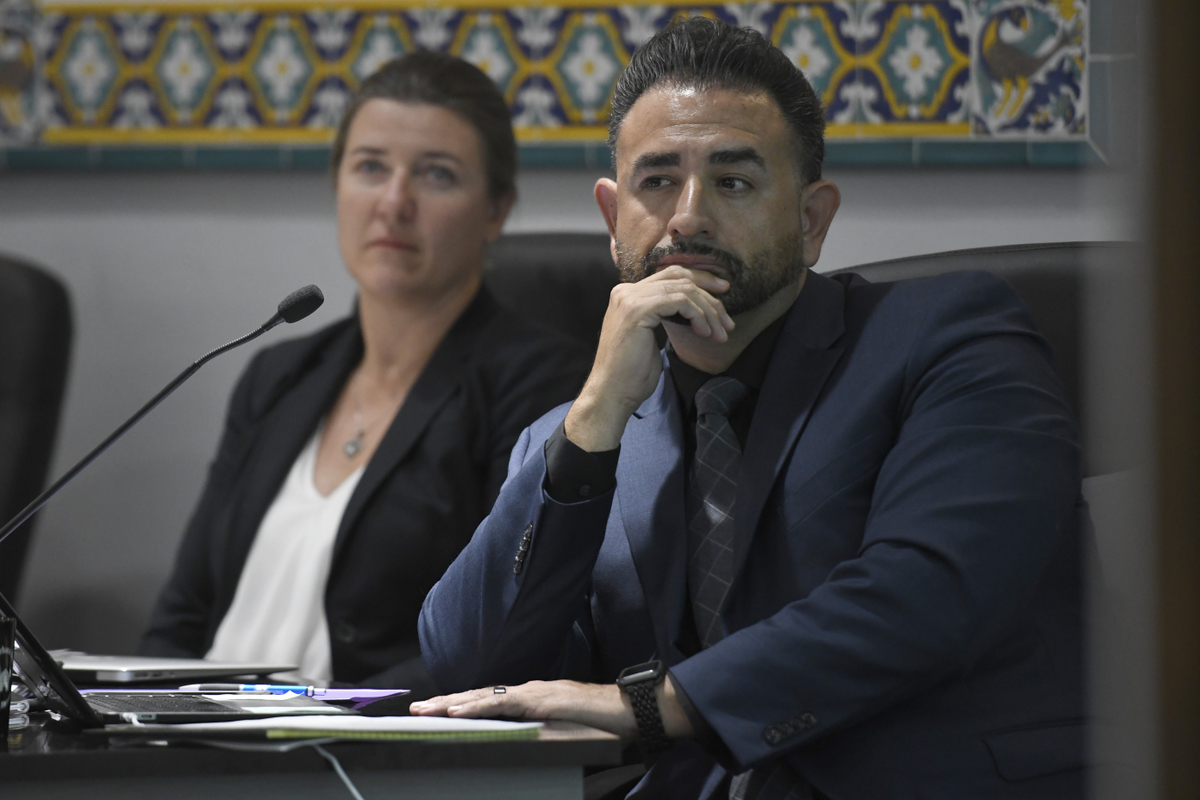Tensions Flare over Stagnant Test Scores
More Than Half of Santa Barbara Students Not at Grade Level, Disadvantaged Student Scores Rise

The Santa Barbara Unified School District put a positive spin on recent data that revealed student math and English proficiency scores have remained relatively flat compared to previous years — igniting outrage among parents who called the scores “damning” and “a disgrace to this town.”
The state test score report, called the California Assessment of Student Performance and Progress Report (CAASPP), measures achievement in English language arts/literacy and mathematics for students in grades 3-8 and 11. The CAASPP testing, now in its fifth year, replaced the previously used STAR testing system. The new program has been called significantly more rigorous than STAR.
“This report is a disgrace to our town. It’s false and misleading,” said James Fenkner, a father of four and co-chair of Fair Education, a local group that has challenged the district in the past. “If you look at these numbers right here, 54 percent of students are not at grade level … if we do the math that’s over 6,000 students. If you look at the numbers which the district was highlighting as positive, it’s absolutely not.”
The district tested 6,572 students in English language/literacy and 6,584 in math. English showed a 1 percent decrease, and math showed 2 percent increase district-wide. Although the staff report called the data “discouraging,” it also pointed to the No Child Left Behind era — when it took 5-10 years for standardized test results to reflect successful school reform — as a source of hope that the stagnant CAASPP scores will eventually catch up, too.
“Overall, although we are not seeing the gains we would like to see, yet, we are glad to see that we are maintaining progress that’s been made in previous years,” said Shawn Carey, assistant superintendent of secondary education. “If you’re maintaining progress, then effectively that is growth because the targets shift every year, year over year the bar gets raised. We see a slight dip in English Literacy overall, but all of that isn’t considered statistically significant.”
Board Member Laura Capps questioned Carey, however, as it was still unclear what “bar” is being raised. “Are 11th graders this year being tested higher than the 11th graders last year? Or are they being tested on a more difficult level than when they were in 10th grade?” Capps asked. Carey confirmed she meant the threshold for meeting standard is elevated each year for every student that advances to the next grade level, making it an apparently futile point.
Equity is at the heart of improving CAASPP scores, and the district said it’s “in a transitional phase in which adults across our district are learning to ‘see the system’ that produces inequitable results.” “Let me be clear,” said Assistant Superintendent of Education Raul Ramirez. “None of us are satisfied with the outcomes or results.”
In some historically disadvantaged groups, the test scores improved compared to overall district scores. For example, Latinx students increased by four points above grade-level in math, and disabled students increased by seven points in English literacy and math. What wasn’t mentioned, though, is the low level at which Latinx and disabled student scores started. With more than half of all students testing below grade-level standard, slight improvements were not seen as something to celebrate.
“This report is damning,” said Sheridan Rosenberg, a mother and member of Fair Education. “These numbers don’t lie. You have kids that cannot read or do math; this is what bigotry looks like. The first thing we need to do is abandon what isn’t working. Bucketing money to your buddies in AHA and Just Communities is not the answer.”
A breakdown of the scores by grade level, school, demographic, and more can be found here.



